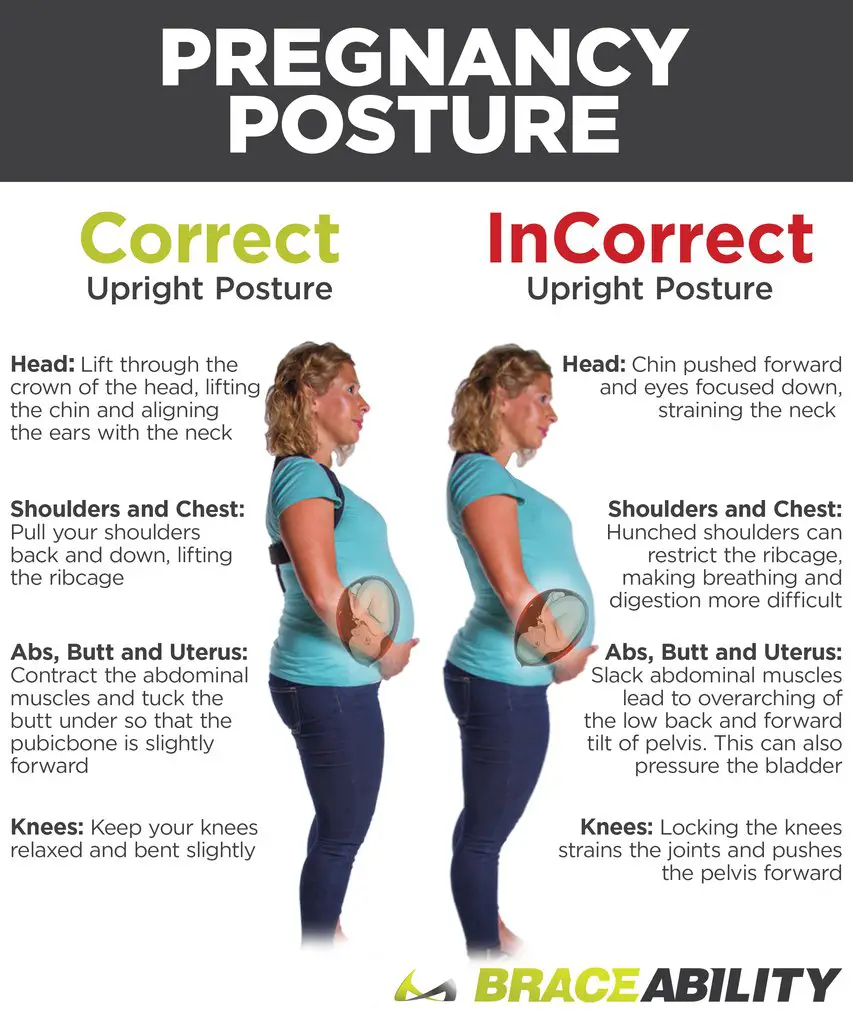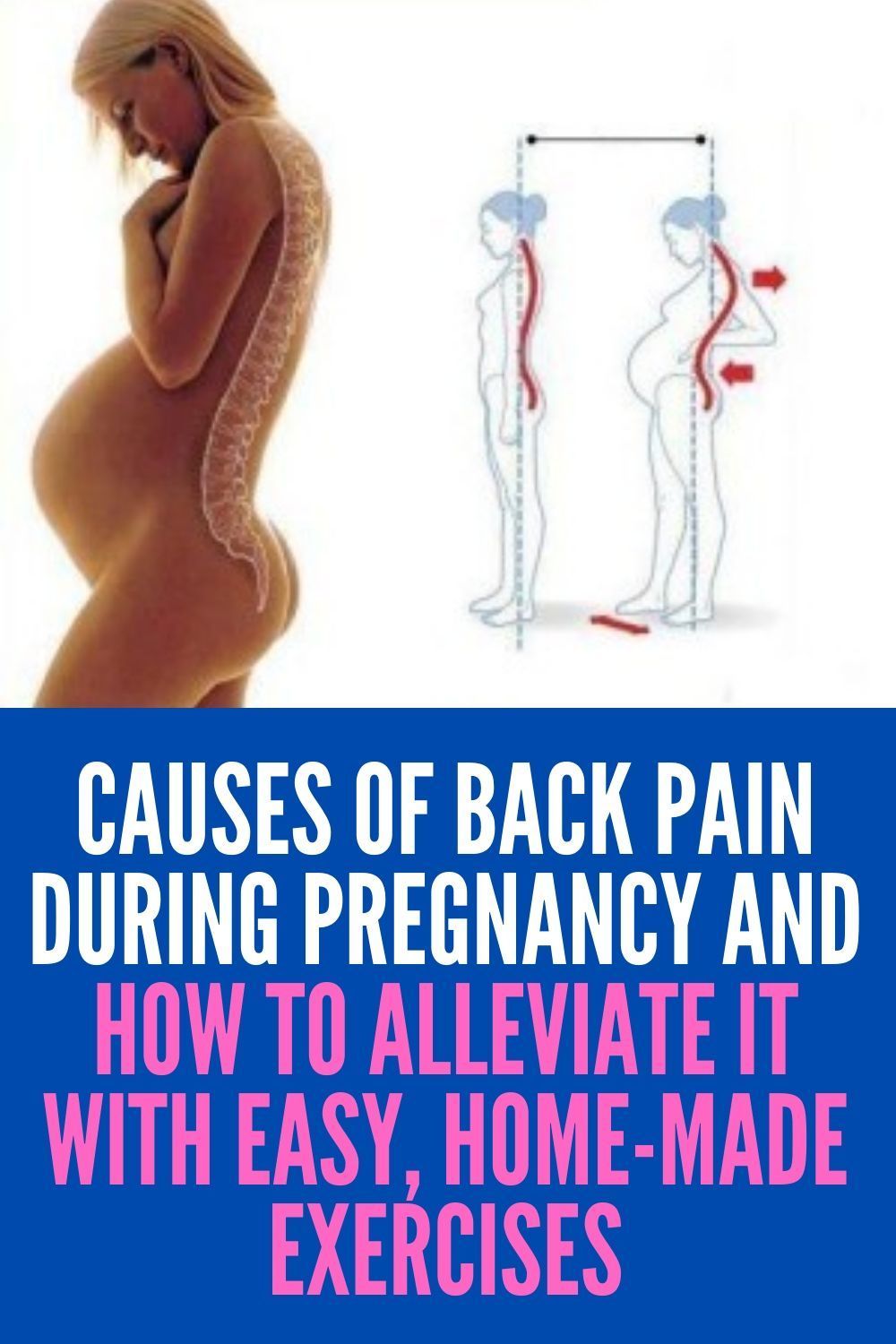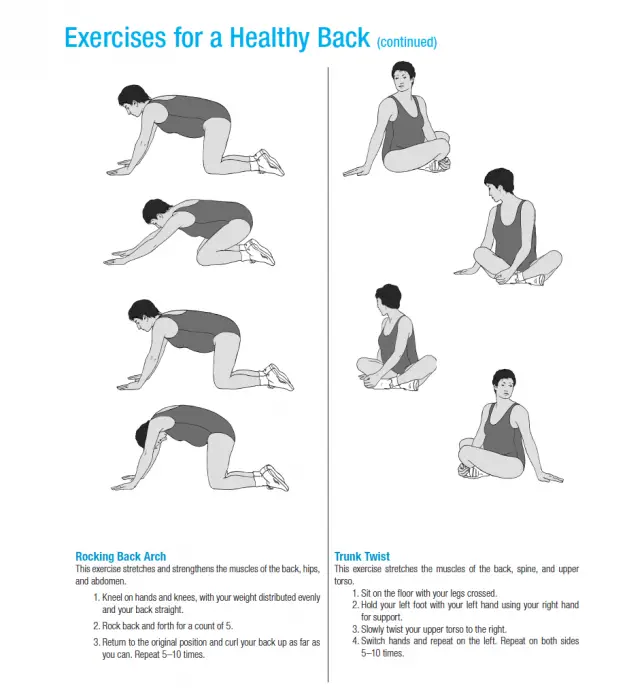A Diagnostic Investigations For Lbp During Pregnancy
Of the 32 studies concerning diagnostic investigations, there were 3 prospective and 2 retrospective observational studies, 26 case reports, and 1 review of literature . Most patients were investigated when the intensity of pain was moderate or severe, or associated with neurological compromise.
Table 1
Summary of studies of diagnostic investigations performed to evaluate low back pain in pregnancy
How Common Is Back Pain During Pregnancy
Back pain is incredibly common during pregnancy, in fact, it affects more than two-thirds of pregnant women and is experienced in varying degrees of severity by most expectant women.
Though most women experience some level of general discomfort during pregnancy, 50 to 70 percent of women specifically report struggling with back pain during pregnancy.
Contact Your Family Doctor If:
- Your pain worsens or does not go away after 2 weeks. Back pain could be a sign of preterm labor.
- You lose feeling in your back, legs, pelvis, or genital area.
- You have a fever, a burning feeling when you pee, or vaginal bleeding. You may have a urinary tract infection or kidney infection.
- You have an injury or trauma that results in back pain.
Don’t Miss: Does Sore Nipples Mean Your Pregnant
Hot And Cold Compresses
To ease your back pain, you can try using a hot and cold compress on your back. Applying first hot and then cold compresses to the area that is sore, can lower the body temperature helping to constrict the blood vessels, reduce swelling and decrease inflammation in your muscles. However, make sure to consult a health professional such as your GP or midwife before trying this, because it is not safe to apply heat to certain parts of the body such as your abdomen whilst pregnant.
Go For Massage Therapy

Research shows that massage therapy during pregnancy can not only reduce back pain but also alleviate leg pain and improve mood and sleep. One study even found that women who had massage therapy had reduced urinary stress hormone levels and experienced fewer complications during delivery. Many different techniques can be used for massage during pregnancy but typically a gentle massage is recommended. And once again, its best to avoid lying flat on the back for your massage.910 Approach an experienced masseuse or ayurvedic practitioner so you get the right care. A medicated ayurvedic oil like mahanarayana taila can also be used for the massage and can bring relief from the pain. This is a medicinal formulation containing sesame oil, milk, and a multitude of beneficial herbs like bilva, ashwagandha, brihati, and shatavari.
Read Also: Can You Take Tums If Your Pregnant
Ergonomically Supported Sleep Positions Reduce Mechanical Strain In The Lower Back
A side-sleeping posture with the use of appropriate supportive pillows is recommended in pregnancy.
- Using a pillow between the knees and ankles while sleeping brings the top of the knee at the same level as the hip, reducing strain on the lower back.1
- Placing a vertical pillow near the abdomen and upper body can help support the top arm and chest area.1
The head and neck may be supported by a small rolled-up towel placed under the neck inside the pillowcase.
See Best Pillows for Different Sleeping Positions
Risk Of Bias Assessment
The reviewers’ consensus assessment of the risk is detailed in Figure 2. The overall risk of bias across the studies was moderate. Most studies adequately stated the methods used for randomization and allocation concealment barring 4 RCTs . Blinding of participants and personnel was considered unclear in most studies barring low risk in only one study and high risk in 3 other studies . The blinding of outcome assessors was judged unclear risk in 17 studies and low risk in 12 studies . All trials barring one study were judged at low or unclear risk of attrition bias and selective reporting. Most studies were determined to be at unclear risk of other bias mainly due to lack of adequate details regarding blinding or outcome assessment. Finally, the overall bias was adjudged as low in 15 studies and as unclear in the remaining 14 studies.
Fig. 2
Risk of bias summary for included RCTs.
Also Check: Can You Get Pregnant With Uterine Fibroids
Stretch 4 Standing Hip Flexor Stretch
How to do it:
Stand with one leg in front of the other in a lunge-stance.
Square up the pelvis so it is facing directly ahead .
Gently tuck the tailbone under or pull the pubic bone forward to feel a pull or lengthening at the front of the hip .
Hold for 10-60 seconds, as often as you can throughout the day.
How it helps:
Undo all the repetitive shortening these hip-flexor muscles get from sitting throughout the day! Again necessary for pelvic mobility during a vaginal birth.
So to sum up:
-
Pelvic and back pain is common during pregnancy, but not normal and certainly not an inevitable part of this incredible journey you are on.
-
The more often you get to do these stretches throughout the day, the better, but they should never cause pain. Aim for a gentle pulling sensation only.
-
These stretches are also super helpful for maintaining or improving mobility of the pelvis in preparation for a vaginal birth.
-
If you are experiencing ongoing discomfort – be sure seek guidance and treatment from your friendly neighbourhood Women’s Health Physiotherapist!
-
Hot tip: These are also great for back pain at any time, including postpartum! So keep them handy in your repertoire after baby arrives.
What stretch are you planning to try first? Please leave a comment below and let me know if you have a stretch that you absolutely loved during your pregnancy.
Back Pain Is Not Accompanied By Abdominal Tightness
When youre in labor, the uterus is contracting. Though you may feel it in your back, the contractions wrap around from the front. If you are experiencing contractions and back labor, you may notice your belly tightening at regular intervals along with your back pain.
Regular back pain is not accompanied by abdominal tightness.
While these tips may help you distinguish between regular back pain and early labor signs, be advised that once labor progresses, if you experience true back labor it may feel very different. During your period of hard labor as opposed to early labor back pain may not let up like regular contractions, and you may feel a constant pain if you are experiencing back labor .
Keep This Statistic In Mind
Don’t Miss: How To Get Rid Of Hormonal Acne During Pregnancy
Final Thought On Back Pain During Pregnancy
Pregnancy is not always a pleasant experience for everyone, especially back pain because it is ongoing and doesnt go away on its own without some help. By following these suggestions above you will find relief and be able to enjoy your pregnancy without being in pain all the time.
Another suggestion that I have is to take frequent breaks and lay with your feet up, this will take some strain off of your back for a little while and allow it to relax. Watch a cute movie or tv show that you wanted to watch and try to enjoy the time without thinking about your to-do list.
Try Pelvic Floor Physiotherapy
Another contributor to back pain is overly tight pelvic muscles. A pelvic floor physiotherapist can help you work on those internal muscles by doing whats basically a massage of your pelvic floor through your vagina. This type of treatment has added benefits, too, as Mickeler says it can reduce the incidence of tearing during delivery, and give you a head start for recovery after your baby is born.
A pelvic floor physiotherapist can also assess the shape of whats called your deep core, which consists of your pelvic floor, your diaphragm, your transverse abdominis and a muscle in your lower back. Mickeler explains that if one part of your deep core isnt working well, it can mean that other parts of your body will have to compensate, which may lead to pain. Aside from working internally, pelvic floor physiotherapists can also use exercise- and rehab-based techniques to help with low-back pain.
Read Also: Can Being Depressed While Pregnant Affect The Baby
What Are Some Causes Of Back Pain During Pregnancy
There are several reasons why you may experience back pain during pregnancy. Sone of the most common causes include:
- Weight gain: As you gain weight during pregnancy, the spine has to support that added weight. That change causes lower back pain. The weight of the growing baby and uterus can also put pressure on the blood vessels and nerves in the pelvis and back, causing pain.
- Changes in hormones: During pregnancy, your body releases a hormone called relaxin that allows ligaments in the pelvic area to relax and joints to loosen in preparation for giving birth. The hormone can cause ligaments that support the spine to loosen as well. This, along with the shifting of joints, can lead to instability and pain.
- Changes in posture: Poor posture, excessive standing or sitting, and bending over can trigger or increase your back pain. In addition, while youre pregnant, your center of gravity shifts forward as your uterus and baby grow, causing your posture and the way you move to change. This can result in strain and pain.
- Stress: Stress can cause muscle tension in the back, resulting in back pain or back spasms. You may experience an increase in back pain during stressful periods of your pregnancy.
- Chronic back pain prior to pregnancy.
Treatment For Early Back Pain During Pregnancy

No matter what stage of your pregnancy youre in, there are ways to treat back pain. You probably wont be able to prevent it completely, but you can help to minimize the pain.
Follow these tips for reducing back pain throughout your pregnancy.
If your back pain seems to be linked to your stress levels, things like meditation, prenatal yoga, and extra rest can all be helpful ways to manage your stress levels.
You May Like: How To Lose Stomach Weight After Pregnancy
How Early Does Back Pain Start In Pregnancy
Studies show that lower back pain usually occurs between the fifth and seventh months of being pregnant, although in some cases it begins as early as eight to 12 weeks. Women with pre-existing lower back problems are at higher risk for back pain, and their back pain can occur earlier in their pregnancy.
Low Back Pain In Pregnancy: Investigations Management And Role Of Neuraxial Analgesia And Anaesthesia: A Systematic Review
Anuj Bhatia, MBBS, MD, FRCA, FRCPC, FIPP, FFPMRCA, EDRA, CIPS
Department of Anaesthesia and Pain Management and Institute of Health Policy Management and Evaluation, University of Toronto, University Health Network-Toronto Western Hospital, McL 2-405, 399 Bathurst St. Toronto, ON M5T 2S8
Recommended Reading: How Early Can You Feel Signs Of Pregnancy
Multimodal Management Including Patient Education Exercise And Psychological Therapies
Six RCTs and one non-randomized trial studied multimodal management often as integrated antenatal classes for management of LBP in pregnancy . Bastiaenen et al. studied the effectiveness of a tailor-made program modifying biopsychosocial factors in women with PLBP, and found it to be effective in improving the limitations in activities as compared to the control group . While 3 other studies reported better analgesic and functional outcomes when compared with the standard care for LBP , the rest reported no difference .
Avascular Necrosis Of The Femoral Head
Biological changes in pregnancy resulting in high levels of natural steroids, including adrenocorticoid, estrogen, and progesterone hormones, combined with weight gain, may cause increased joint pressure and muscle strain in the hip. These changes may result in a condition called avascular necrosis of the upper part of the femoral bone . The condition causes destruction of bone tissue in the femoral head due to lack of blood supply.2
The symptoms of avascular necrosis of the femoral head start around the third trimester and include2:
- Pain that is felt deep in the groin
- Radiating and referred pain to the lower back, thigh, and/or knee
The symptoms are exacerbated on bearing weight, such as while standing and/or walking.
Read Also: What Is Safe To Take For Allergies While Pregnant
How To Manage Back Pain During Pregnancy
Pregnancy is a joy to be treasured for most women and also a trying time to cope physically and mentally. Among other discomforts, back pain is one of their main grouses during pregnancy. Almost 75% of women who are pregnant have some forms of back pain. Some have symptoms of back pain during the early stage of pregnancy while more than half experience it during the last three months.
Pregnancy and Back pain
A pregnant woman may experience different types of back pain, but low back pain is the most common. The back pain can be moderate or intense, but it can usually be treated. In some cases, it can be prevented.
Wear A Maternity Belt
A maternity belt, which you can buy online and in many maternity clothing shops, is a supportive undergarment that helps hold up the belly so the pelvic girdle and lower back aren’t too strained. If your belly is protruding forward in a pronounced way, rather than with your weight diffused across your midsection, the belt can act as a substitute for your abdominal core muscles, which can struggle to prevent your lower spine from painfully exaggerating its curvature. Doctors generally advise women to try maternity belts and use them if they work, but the belts should be seen as a complement to other remedies rather than the only pregnancy back pain relief strategy.
Don’t Miss: What To Put On Pregnant Belly For Stretch Marks
Strengthen Your Abdominal Muscles
Sit-ups arent exactly a pregnancy-friendly exercise. To strengthen your abdominal muscles, do the following exercises a few days a week. Remember that lightweight is recommended, and you should never push yourself too hard during pregnancy.
Simply using and moving your muscles will help to strengthen them sufficiently.
- Abdominal twists: Place your feet hip-width apart. Bend your knees so you are in a half-squat. Do not squat too deeply, and if you feel any discomfort, make your squat more shallow. Holding a lightweight in each hand against your chest, twist at the waist from side to side. Do not wildly swing your body, but instead maintain control and squeeze your abdominal muscles as you twist back and forth.
- Upper cuts: Standing again in a partial-squat position with light weights, make an upper-cut punching motion while twisting slightly at the waist. Keep your abs tight. You can also do this exercise without weights.
- Knee lifts: Stand up with your hands on your hips. Raise your knee in a slow and controlled motion, making sure you are lifting with your abdominals. If you can do so comfortably, crunch forward slightly as your knee comes up to work your abs harder. If you have trouble with balance, you can do this exercise while standing against a wall.
Remember to always consult with your doctor before attempting these exercises and make sure you do not have any risk factors that could prevent you from performing these exercises.
Tips For Getting In And Out Of Bed With Back Pain

- Try to avoid lying flat for long periods of time. Its better for your back and your baby to lie on your side.
- You may find it more comfortable to have a pillow under your bump or between your knees to support your back. This can help you sleep better, too.
- Some women find pregnancy pillows can help, but they can be pricey. You may find a normal pillow does the trick.
- If you are getting pain in your hip from lying on your side, it may help to place a duvet under your sheet or use a memory-foam topper for a softer mattress.
Getting in and out of bed can get more difficult as your bump gets bigger. To take the strain off your back, try rolling onto your side moving your shoulders, hips and knees at the same time. Let your legs ease off the edge of the bed and put your feet on the floor. At the same time, use your arms to push yourself up to a sitting position.
Doing this all as one movement can be more comfortable. Try the movement backwards to get back into bed.
Recommended Reading: Does Short Term Disability Cover Pregnancy
Causes Of Back Pain During Pregnancy
As many as 80 percent of moms-to-be experience back pain at some point during their pregnancy, and the causes can vary. The main culprit is often strain on the muscles of your back caused by pregnancy weight gain and by changes in your posture due to your growing belly. As your pregnancy progresses, there is more weight on the front of your body, making you bend slightly forward. To keep you balanced, your posture changes, and you might overcorrect and lean back a little too far. The extra strain can make your back feel stiff and sore.
Weak abdominal muscles can also cause back pain. As your baby grows, your tummy muscles can stretch and weaken. These muscles play an important role in supporting your spine, so as they weaken, your back can start to hurt.
Some pregnancy hormones can also play a role. Hormones that are meant to relax the ligaments and joints of your pelvis to help your baby pass through the birth canal more easily can also loosen the joints of your back, which can cause them to overextend, leading to soreness.

